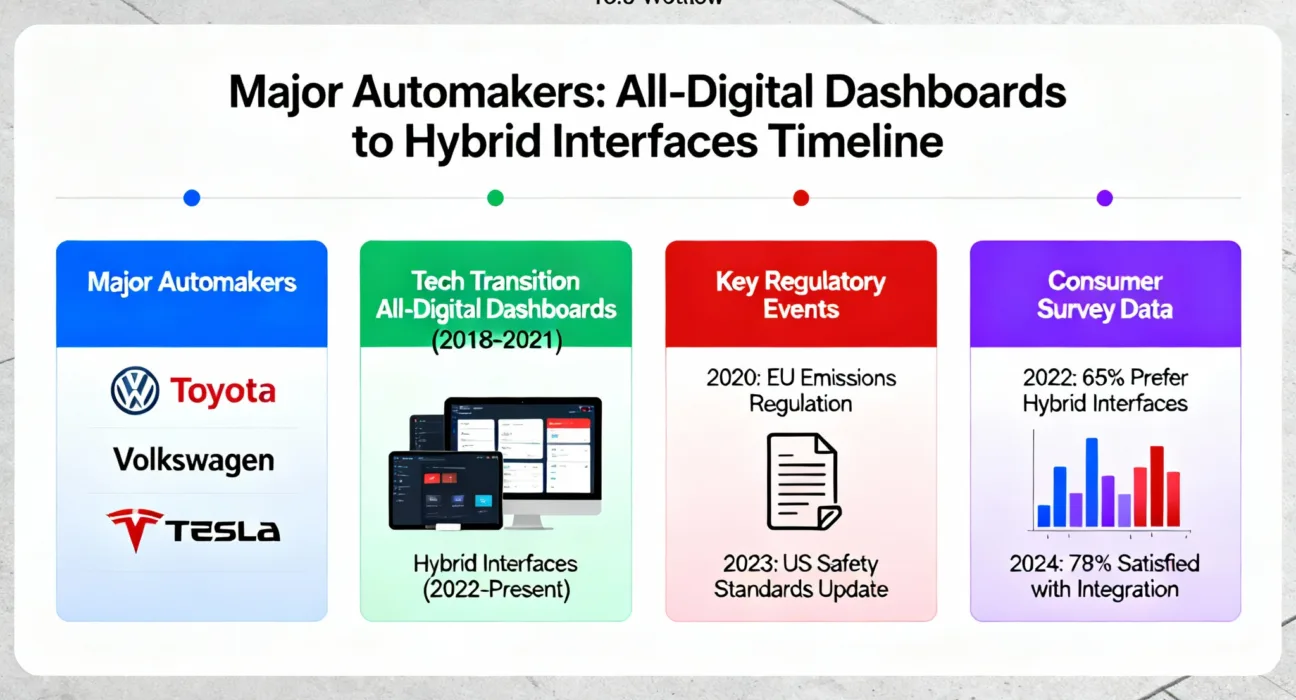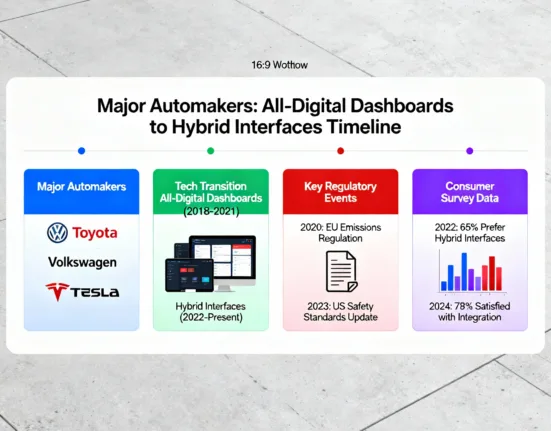Mercedes-Benz Ditches Touchscreens: Why Automakers Are Reversing Course on Digital Dashboards
- by WireUnwired Editorial Team
- 4 October 2025
- 3 minutes read

A recent industry move is turning heads: Mercedes-Benz is phasing out touchscreens in favor of physical buttons for key car functions, citing safety and usability concerns. This shift comes as automakers, once racing to digitize dashboards with expansive touch interfaces, now face mounting evidence—and consumer pushback—that too much screen time behind the wheel can be both distracting and dangerous. The trend signals not only a rethinking of automotive interior design but also highlights critical debates around driver distraction, technology design, and the future of automotive user interfaces.
The Pushback Against Touchscreens: Safety and User Experience
After years of prioritizing touchscreen infotainment systems and minimalistic digital dashboards, several leading automakers are reconsidering their approach. Mercedes-Benz’s decision is rooted in both internal research and growing regulatory scrutiny:
- Driver distraction is a top concern: A 2022 AAA Foundation study found that complex touch interfaces can significantly increase “eyes-off-road” time, raising the risk of accidents.
- Tactile controls outperform screens: Physical buttons and knobs allow drivers to operate common functions (like climate control or audio) by feel, reducing cognitive load and improving reaction times. In contrast, touchscreens require visual attention, which can cause dangerous lapses in focus.
- Consumer preference shift: Recent surveys (e.g., J.D. Power’s 2024 Vehicle Dependability Study) show a growing number of drivers find touchscreen-heavy interiors frustrating, especially in critical scenarios like adjusting climate or headlights at night.
Automotive safety agencies in Europe and North America are now evaluating guidelines to limit mandatory touchscreen interactions while driving, with some proposing minimum standards for physical controls. Mercedes-Benz is not alone—Mazda, Volkswagen, and Hyundai have all announced similar steps to reintroduce tactile controls in upcoming models.
Table: Common Car Controls and Preferred Interface Type (2024 Survey Data)
| Control Function | Preferred Interface | % Respondents (US) |
|---|---|---|
| Volume/Audio | Physical Button | 71% |
| Climate Control | Physical Knob | 66% |
| Navigation Input | Touchscreen | 54% |
| Headlights | Physical Switch | 82% |
(Source: J.D. Power 2024 Vehicle Dependability Study)
Autonomous Vehicles: New Safety and Regulatory Questions
The debate over user interfaces is mirrored by parallel challenges in the autonomous vehicle sector. A recent incident involving a Waymo self-driving car performing an illegal U-turn—with no human driver present—exposed a regulatory gap: law enforcement currently lacks mechanisms to penalize autonomous vehicles directly. This highlights several emerging issues:
- Accountability in autonomous systems: When a self-driving car breaks the law, should the operator company, the vehicle itself, or the software developer be held responsible?
- User interface for law enforcement: Police need new tools and protocols to interact with driverless vehicles—a challenge as these cars proliferate in urban settings.
- Public trust and adoption: Incidents like these fuel skepticism about the readiness of autonomous vehicles for widespread deployment, especially regarding edge cases and system handoffs.
Industry analysts predict that as autonomous vehicles become more common, regulatory frameworks must evolve to address not just technical capabilities (like LIDAR, radar, and AI navigation) but also the human factors and societal impacts of cars without drivers.
Data Security and Ethics in AI-Powered Systems
The rapid integration of AI across automotive and enterprise platforms also brings data privacy and ethical risks to the fore. News that Microsoft Copilot AI assistants may access millions of records per company—including sensitive and regulated data—has raised alarms about data governance and compliance:
- Sensitive data exposure: A recent TechRadar Pro report found that Copilot, when deployed organization-wide, could access an average of 3 million sensitive records, including HR, financial, and proprietary data.
- Compliance challenges: Enterprises must ensure that AI-powered tools respect privacy laws such as GDPR and CCPA, with robust access controls and audit trails.
- Explainable AI and transparency: For both automotive and enterprise systems, users increasingly demand transparency about how AI systems make decisions and what data they access.
Similarly, AI-generated content in entertainment—such as the emergence of “AI actresses” in film—has sparked backlash from actors and directors, who see it as both an ethical challenge and a threat to creative professions. These concerns are driving calls for clearer digital rights management, synthetic media labeling, and new industry standards.
The Road Ahead: Hybrid Interfaces, Smart Regulation, and Trustworthy AI
The convergence of these trends points to a new era where human factors, safety, and trust will be as important as raw technological innovation:
- Hybrid user interfaces: Expect a blend of tactile controls and context-aware digital displays designed to optimize safety and user experience.
- Smart, adaptive regulation: Governments and industry bodies are moving toward rules that balance innovation with public safety and privacy.
- AI ethics as a differentiator: Companies investing in explainable, privacy-respecting, and human-centric AI will have a competitive advantage.
Discover more from WireUnwired Research
Subscribe to get the latest posts sent to your email.










